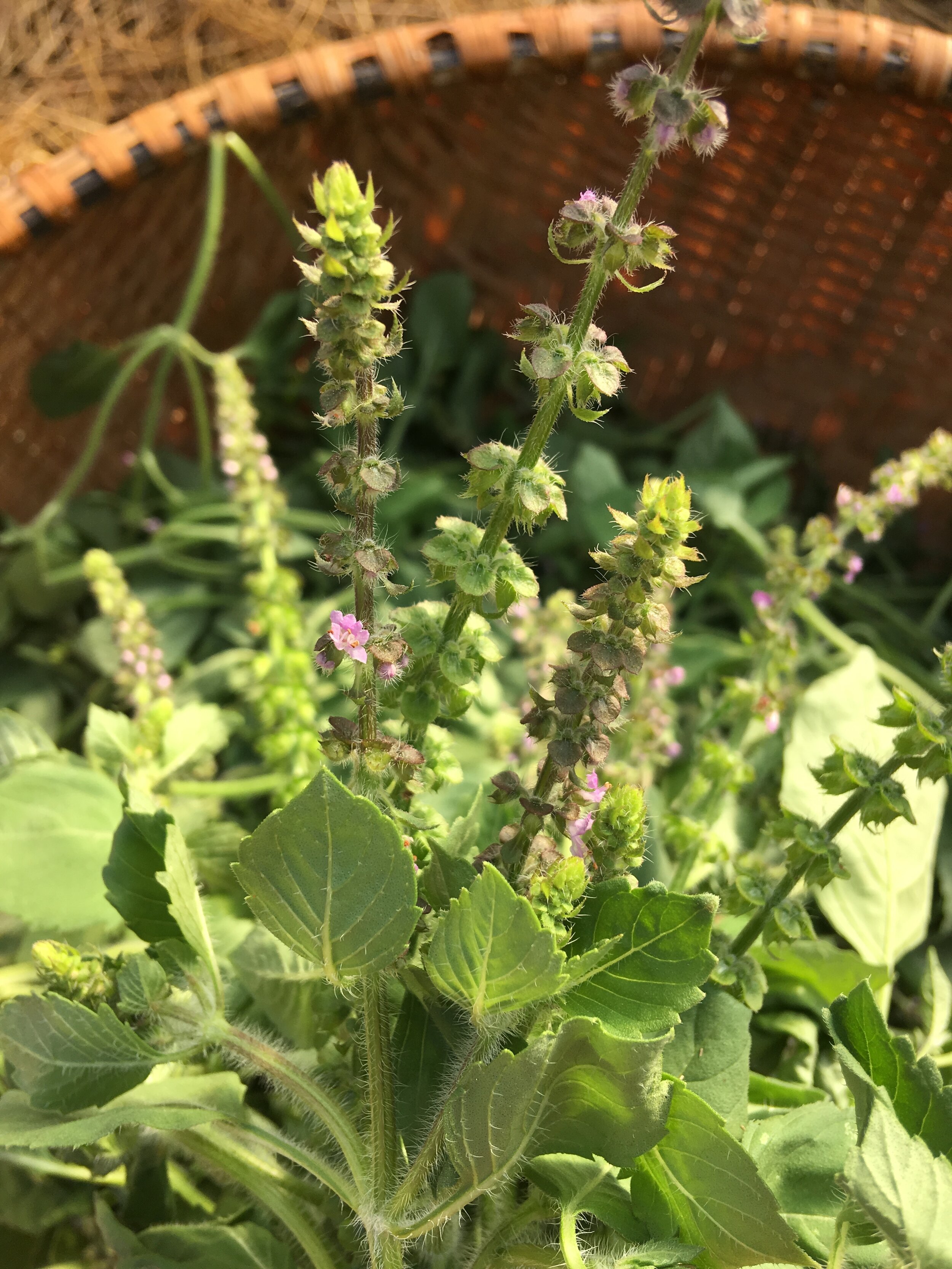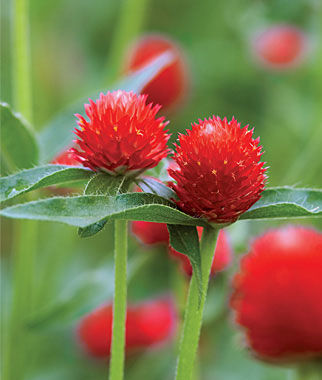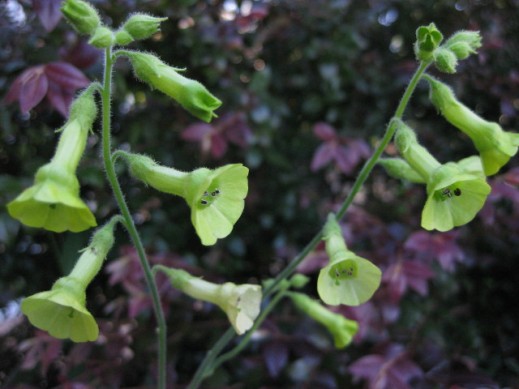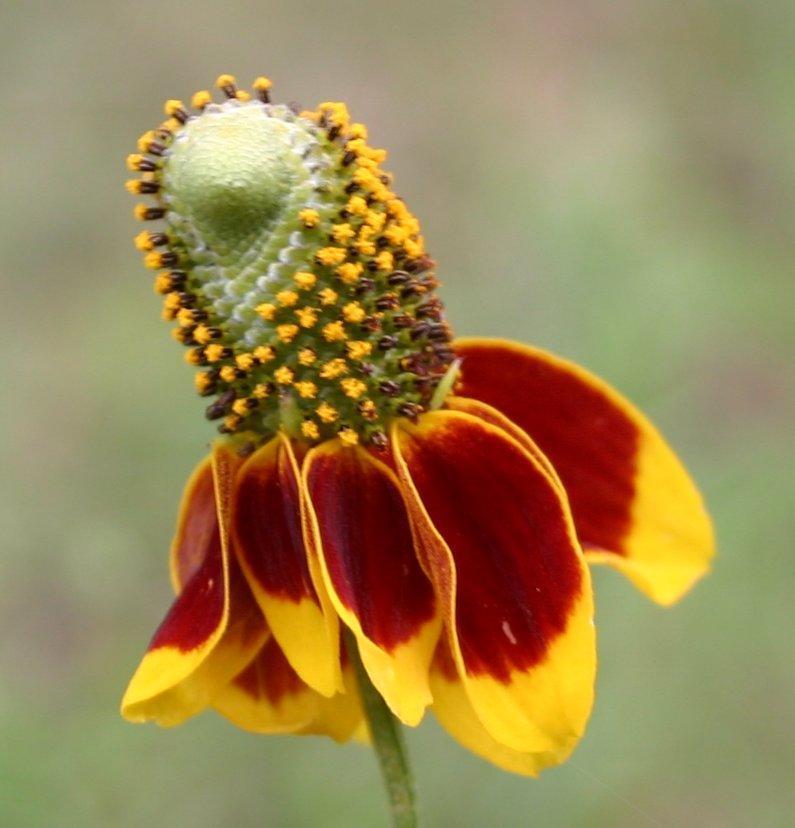This is the first installment in our medicinal herb series by Sophie Cassel, Red Wagon Plants employee and Burlington herbalist. Please check our events calendar for her medicinal herb workshops this year.
Tulsi (aka Holy Basil), Ocimum tenuiflorum Ocimum sanctum, Lamiaceae
While you won’t find Tulsi- also known as Holy Basil and Tulasi- in any classic English herb gardens or older western herb books, it has risen to prominence over the years both for its medicinal benefits and relative ease of growth, even while our northern climate is far removed from its native habitat on the Indian subcontinent. There, pots of perennially-blooming Tulsi bless the doorways of houses, where the plant is considered sacred by many. What a gift, then, that those of us far away in the western hemisphere can experience the joy of growing and using this plant!
Tulsi basil is in the same genus as our culinary basils, and within the umbrella of Ocimum tenuiflorum there are multiple subtypes and varieties, including Rama, Vana, and Kapoor Tulsi. While all three can theoretically be grown in Vermont, I have found that Kapoor Tulsi is consistently the easiest and most rewarding to grow, and that is the variety we grow and sell at Red Wagon Plants. Since I began growing Kapoor Tulsi in my gardens in 2015, I have become completely, utterly hooked on this plant. From watching its little paw-print shaped leaves evolve as seedlings, to inhaling its heady perfume as the flowers open, to sipping the tea of its dried leaves in the winter, I keep Tulsi close at hand all year long.
From a medicinal perspective, Tulsi is compelling as one of the easier “adaptogenic” plants to grow- adaptogen referring to plants that have been used to regulate and support our nervous systems and have a wide range of positive actions on our body, mind and spirit. While the uses and impacts of adaptogens are too complex to dive into here (although I like Jim McDonald’s credit card analogy), it’s worth noting that Tulsi can be helpful to both calm an overactive system, as well as provide some energy to a burnt-out one. It’s packed with antioxidants and is strongly anti-inflammatory. Plus, it tastes amazing- I often hear folks liken the flavor to an herbaceous bubblegum, and its sweetness makes it palatable to basically everyone, picky kiddos included. The Indian medical system known as Ayurveda considers Holy Basil a “rasayana”, translated as “to lengthen the lifespan” in Sanskrit. Most of what we in the West know about its uses stems from what Ayurveda has taught us from a 3000 year history of use and reverence.
Growing Holy Basil is quite similar to growing other types of culinary basils- it prefers fertile garden soil with decent moisture and full sun, although it’s not as moisture-dependent as the Italian basils. It’s important to wait for the ground to fully warm up before planting Tulsi, so start seeds indoors or purchase plants to give yourself a leg up. Once established, you can get up to three or four big harvests over the season- once the plant has started to set flowers, cut down to about a foot and watch it spring back, bushier than before. However, its important to leave plenty of flowers for the bees, who go absolutely bananas for this plant. I have spent delightful stretches of time lying belly-down on the warm summer ground, watching the insect cacophony surround my row of Tulsi plants. If you’re really lucky and observant, a blissed-out bee will leave you a little red pollen sac on one of the leaves- a tiny treat! Left to drop seed, Tulsi may actually volunteer back into your garden, but don’t expect to see seedlings until early July when it’s finally warm enough to resemble the plant’s natural growing conditions.
The real question with Tulsi is what to do with your bounty once it’s been harvested. The high water content makes it a little finicky to dry. I’ve had the best luck in a dehydrator on low heat, but it can also be hung in small bunches in a warm, well ventilated area until the leaves can be stripped from the stems, which take much longer to dry.
The easiest way to enjoy Tulsi is to use the fresh leaves and flowers. Fresh Tulsi sun tea is a transcendent experience on a hot summer afternoon. Simply place a handful of bruised leaves in a mason jar, cover with cool water, and leave in a sunny spot for a few hours (with the lid on to keep in all those aromatic oils!) It also makes a stellar vinegar infusion:
Tulsi Vinegar
4-5 big handfuls of Tulsi leaves and flowers, chopped
Apple cider vinegar
Honey (optional)
Pack leaves and flowers into a jar, then cover with apple cider vinegar and steep for 2-3 weeks. Strain, add honey to taste, and bottle. Use this sweet, floral vinegar in salads, or mix with seltzer water for a summer-infused sparkling beverage. This will keep for at least 3-4 months, indefinitely in the refrigerator.
Let Tulsi into your garden, and you’ll reap its blessings and benefits all year long!
Resources:
De la Foret, Rosalee. Health Benefits of Tulsi. https://www.herbalremediesadvice.org/health-benefits-of-tulsi.html








